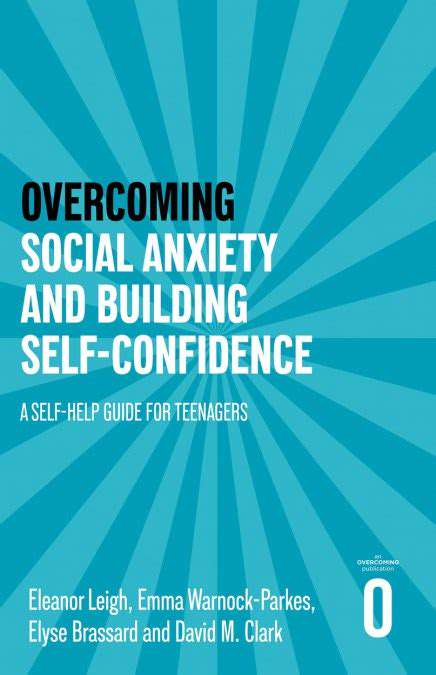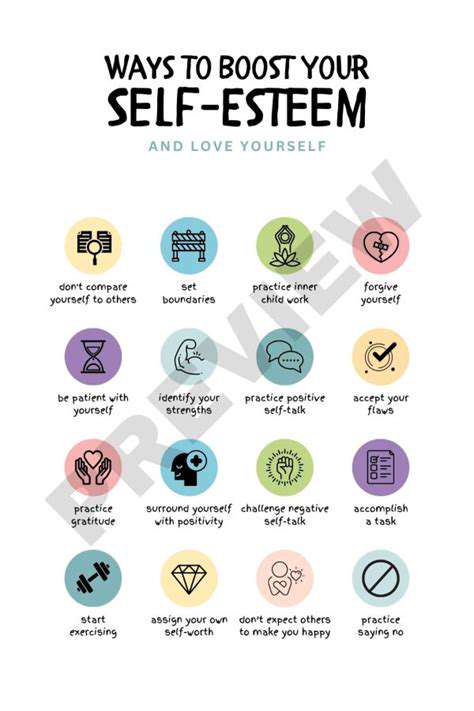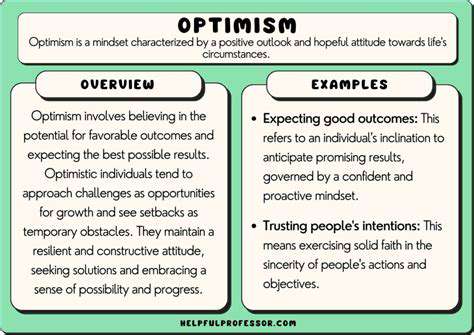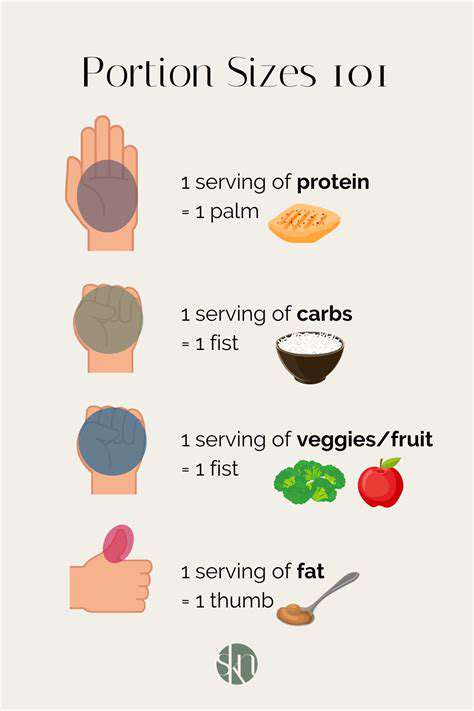How to Create a Healthy Sleep Environment
Temperature Regulation: Finding Your Ideal Sleep Zone
Understanding Core Body Temperature
Maintaining a consistent core body temperature is crucial for healthy sleep. As your body prepares for sleep, your core temperature naturally begins to decrease. This cooling process is a vital signal to your body that it's time to rest. Disruptions to this natural cycle can lead to sleep disturbances and overall sleep quality issues. Understanding how your body regulates temperature is the first step in creating a sleep environment that supports this natural process.
Factors like age, activity levels, and overall health can influence your core temperature. Knowing your individual needs is key to optimizing your sleep environment.
The Impact of Room Temperature
The temperature of your bedroom plays a significant role in your ability to fall asleep and stay asleep. A room that is too hot can disrupt your body's natural cooling process, making it harder to achieve deep sleep. Conversely, a room that is too cold can cause discomfort and awaken you throughout the night. Finding the sweet spot for your sleep environment is crucial for maximizing your sleep quality.
Experimenting with different room temperatures to find your personal ideal can lead to improved sleep patterns.
Clothing Choices for Optimal Sleep
The clothing you wear to bed can significantly affect your body temperature. Overdressing can lead to overheating and discomfort, while underdressing can lead to feeling cold and restless. Choosing breathable fabrics like cotton or linen can help regulate your body temperature throughout the night, ensuring a comfortable sleep environment. The right clothing choices can be a simple yet effective strategy for improving your sleep quality.
The Role of Bedding Materials
The materials used in your bedding also contribute to regulating your body temperature. Heavy blankets can trap heat, leading to overheating, while lighter blankets might not provide sufficient warmth during cooler nights. Choosing bedding materials that allow for proper airflow and breathability is essential for maintaining a comfortable temperature throughout the night. Consider the season and your personal preferences when selecting your bedding.
Environmental Factors Affecting Sleep Temperature
Beyond clothing and bedding, other environmental factors can influence sleep temperature. External factors like weather conditions, humidity, and even the presence of drafts can all impact your body's ability to regulate temperature. Understanding how these factors interact with your personal needs can help you create a more supportive sleep environment.
Controlling external factors, such as using a humidifier or dehumidifier, can help to optimize your sleep temperature.
Individual Variations and Preferences
Everyone experiences temperature differently when it comes to sleep. What might be ideal for one person might not be suitable for another. Factors like age, metabolism, and personal preferences all contribute to individual needs. Experimentation and self-awareness are key to determining your ideal sleep temperature and creating a personalized sleep environment that promotes optimal rest.
Pay attention to how your body responds to different temperatures and adjust your environment accordingly to find your ideal sleep zone.
Light Management: Darkness is Key for Melatonin Production
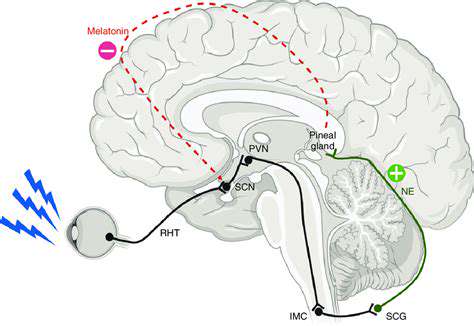
Optimizing Sleep Cycles
A crucial aspect of light management is understanding and optimizing your sleep cycles. Sufficient darkness in the hours leading up to bedtime is paramount for the production of melatonin, a hormone vital for regulating sleep. Melatonin helps to signal to your body that it's time to rest, promoting a deeper, more restorative sleep. Exposure to artificial light, especially blue light emitted from electronic devices, can significantly suppress melatonin production, leading to sleep disturbances and a diminished quality of sleep.
The Impact of Ambient Light
The quality and quantity of ambient light throughout the day also have a significant impact on your overall well-being. Natural daylight exposure, when possible, is beneficial for regulating your circadian rhythm, a natural internal clock that governs various bodily functions, including sleep, hormone production, and alertness. However, excessive or poorly managed indoor lighting can disrupt this rhythm, leading to feelings of fatigue or overstimulation.
Blue Light's Role in Sleep Disruption
Blue light, emitted by electronic screens and many artificial light sources, is particularly disruptive to sleep. This type of light is perceived by the body as a signal of daytime, suppressing melatonin production and making it harder to fall asleep. Minimizing exposure to blue light in the hours before bedtime is a key strategy for improving sleep quality.
Strategic Lighting for Different Environments
Consider the lighting in different environments. In bedrooms, a calm, dim lighting scheme is ideal for promoting relaxation and sleep. For workspaces, adjustable lighting that can be dimmed or changed in color temperature can enhance focus and productivity. Strategic use of light can significantly impact mood and performance in various settings. Proper lighting arrangements can foster a more productive work environment and a more relaxing home environment.
Dimming the Lights for Better Sleep
Creating a dedicated sleep environment that promotes darkness is essential for optimal sleep. Dimming lights and reducing screen time several hours before bed can significantly improve the quality of sleep. This allows your body to naturally transition into a sleep-conducive state. Utilizing blackout curtains or eye masks can also help create a more conducive sleep environment by blocking out ambient light.
Darkness and Physical Health
Beyond sleep, sufficient darkness contributes to overall physical health. Studies suggest that exposure to darkness can positively impact hormone regulation and stress reduction. The absence of light allows your body to rest and recover, potentially reducing the risk of various health issues. Adequate darkness is crucial for maintaining a balanced internal environment, directly influencing both your physical and mental well-being.
Comfort and Ergonomics: Bedding and Sleep Position
Choosing the Right Mattress
Selecting a mattress that aligns with your body type and sleep preferences is crucial for comfort and support. A firm mattress may be ideal for individuals who tend to sleep on their backs or stomachs, providing adequate support for the spine. Conversely, a softer mattress might be more suitable for side sleepers, offering cushioning and pressure relief. Consider factors like the materials used (innerspring, memory foam, latex), the firmness level, and the overall thickness when making your decision. Ultimately, a comfortable mattress contributes to a more restful night's sleep, minimizing aches and pains.
Importance of Pillows
Pillows play a vital role in supporting your neck and head during sleep, preventing strain and promoting proper spinal alignment. Choosing the right pillow is highly personal, depending on your sleeping position and preferences. If you're a side sleeper, a thicker pillow that cradles your neck and head might be beneficial. Back sleepers often prefer a flatter pillow, while stomach sleepers may need a supportive pillow to maintain neck alignment. Experiment with different pillow types and heights to find the perfect fit for a more comfortable and rejuvenating sleep experience.
Optimal Sleep Positions
Your sleeping position significantly impacts your comfort and spinal health. Sleeping on your back is generally considered the best position for maintaining spinal alignment, promoting healthy posture and minimizing pressure points. However, if you find yourself consistently tossing and turning, exploring different positions could be helpful. Side sleeping, while often preferred for comfort, can sometimes lead to shoulder and hip discomfort if not properly supported by pillows and bedding. Understanding how your body responds to different positions can help you identify the most comfortable and conducive sleep position for your individual needs.
Bedding Materials and Their Impact
The materials used in your bedding can greatly influence your sleep quality. Soft, breathable fabrics, like cotton or linen, are often preferred for their comfort and ability to regulate body temperature. However, some individuals might find synthetic materials, like polyester or microfiber, more durable or easier to maintain. Consider the breathability and absorbency of the fabric when choosing sheets, blankets, and other bedding items. The right combination of materials can create a supportive and comfortable sleep environment, promoting relaxation and deep sleep.
The Role of Temperature Regulation
Maintaining a comfortable room temperature is essential for a good night's sleep. A slightly cool room, around 65 degrees Fahrenheit, is often ideal for promoting relaxation and preventing overheating. The temperature in your bedroom can significantly impact your comfort level and sleep quality. Consider using lightweight blankets or sheets if you tend to overheat, and investing in a good quality fan or air conditioner for added cooling. Proper temperature regulation creates an environment conducive to a restful and rejuvenating sleep experience.
Read more about How to Create a Healthy Sleep Environment
Hot Recommendations
-
*Guide to Managing Gout Through Diet
-
*Best Habits for Financial Well being
-
*How to Build a Routine for Better Mental Health
-
*How to Eat Healthy on a Budget [Tips & Meal Ideas]
-
*Guide to Practicing Self Acceptance
-
*How to Incorporate More Movement Into Your Day
-
*Guide to Managing Chronic Pain Naturally
-
*Guide to Building a Reading Habit for Well being
-
*Top 5 Weight Loss Supplements That Actually Work
-
*Best Exercises for Postpartum Recovery [Beyond Abdominal Work]
